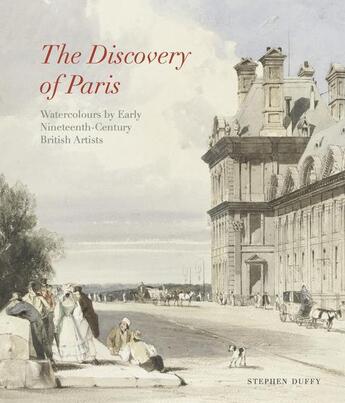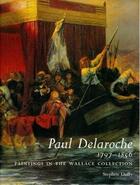Résumé:
The Discovery of Paris charts the remarkable contribution of the British to the iconography of the French capital. Paris had been painted many times before, but never more beautifully than by 19th-century British artists, and very rarely by artists of such high standing in their own countries.... Voir plus
The Discovery of Paris charts the remarkable contribution of the British to the iconography of the French capital. Paris had been painted many times before, but never more beautifully than by 19th-century British artists, and very rarely by artists of such high standing in their own countries. There are many similarities between some of their views and those painted later by the Impressionists. Their styles also varied widely, from the crystalline precision of Thomas Shotter Boys, whose superb watercolours will be some of the stars of the show, to the incomparable verve of Turner at his most intense.
With the ending of many years of war, first with the Peace of Amiens of 1802-03 and then after the final defeat of Napoleon at Waterloo, Paris became an irresistible attraction for thousands of British tourists, among whom were many painters. Before the French wars, the city had been an important early stop on the Grand Tour, and it quickly re-assumed its key position. As steam-powered transport became available, the Grand Tour, and Paris, in particular, became increasingly popular for the middle classes, as well as the aristocracy. British artists lived in the city and both fuelled and responded to this demand. There was an unprecedented interest in views of Paris, and artists, from the obscure, such as Robert Batty and John Gendall, to the eminent, such as Turner, Bonnington and David Cox, responded to this excitement with an extraordinary range of works, from simple pencil views to the most elaborate watercolours, some for sale and exhibition, but many also for engraving as illustrations in guides and souvenir publications.
Accompanying an exhibition at the Wallace Collection, this in-depth and beautifully illustrated catalogue of 70 rarely seen works (from Tate, the V&A, the British Museum and the Fitzwilliam, amongst others) is introduced with an essay by Wallace curator Stephen Duffy. He begins with an examination of watercolour in Britain in the first half of 19th century, when it enjoyed unprecedented popularity and prestige, and the tradition of urban view painting extending back to the 17th century. British attitudes to Paris, and the differing emphasis and omissions made by artists in their depictions of the city are then discussed. Finally, Duffy looks at Paris in the aftermath of this wave, in the second half of the century, when the most arresting views of this fast-changing city were to be found in photographs and in a variety of other media, very largely in works by native artists - notably Manet and the Impressionists. Earlier in the century, however, when Paris was also changing but at a slower pace, it had been those curious neighbours from across the Channel who had produced some of the finest and most memorable paintings of the city, and in a medium which they claimed as peculiarly their own.















